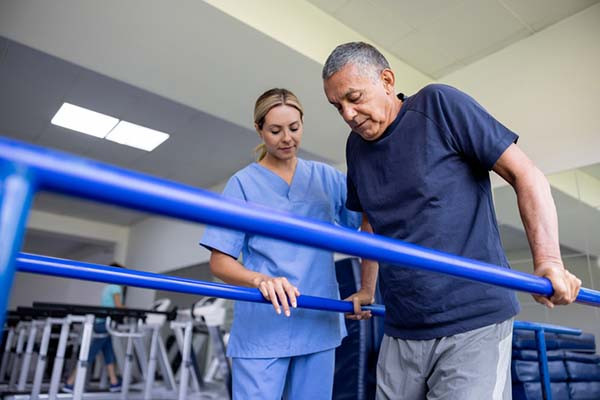
Pilates: A good option for older adults?

A muscle-building obsession in boys: What to know and do
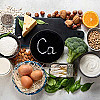
Calcium-rich foods: How to boost your intake of this important mineral
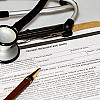
DNR: What is a do-not-resuscitate order?
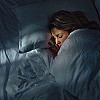
Sleep hygiene: Simple practices for better rest
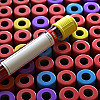
Should you be tested for inflammation?
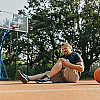
Torn meniscus: Symptoms, diagnosis, and treatment options

Life can be challenging: Build your own resilience plan

Alcohol and your health: Risks, benefits, and controversies
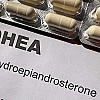
DHEA supplements: Are they safe? Or effective?
Stroke
- Reviewed by Andrew E. Budson, MD, Contributor; Editorial Advisory Board Member, Harvard Health Publishing
Blood vessels deliver oxygen and nutrients to the brain. Without them, brain cells die. A stroke occurs when blood flow to one or more parts of the brain is limited. After a stroke, a person might be unable to move, speak, think, recognize people, or see. Stroke is the fifth leading cause of death in the United States.
Time is of the essence when treating a stroke. Delaying treatment can lead to more severe and potentially permanent neurological damage. That's why it's important to quickly recognize signs of a stroke and immediately call for help.
How do I know if I'm having a stroke?
Some of the first signs of a stroke are difficulty talking or numbness, weakness, or paralysis in the face, arm, or leg. Strokes often affect only one side of the body.
The FAST test can be used to help determine if you or someone else is having a stroke:
Face: Ask the person to smile. Does one side of the face droop?
Arms: Ask the person to raise both arms. Does one arm drift downward?
Speech: Ask the person to repeat a simple sentence. Are the words slurred? Does he or she fail to repeat the sentence correctly?
Time: If the answer to any of these is yes, call 911. Record the time you first noticed symptoms.
Other signs of a stroke include:
- confusion
- trouble understanding people
- difficulty speaking
- sudden vision problems in one or both eyes
- balance and coordination problems
- dizziness
- sudden and severe headache.
It is always best to err on the side of caution and call 911 if you suspect that you or someone else may be having a stroke.
What are the different types of stroke?
There are two main kinds of strokes are ischemic and hemorrhagic.
Ischemic stroke
Ischemic strokes are the most common, accounting for about nine out of 10 strokes. They occur when a blood clot blocks an artery supplying blood to the brain.
Strokes may occur when a blood clot forms in one of the large arteries supplying blood to the brain. The clot or a piece of plaque breaks off, traveling to another, narrower part of the same artery. There it gets stuck, cutting off the blood supply. A stroke can also occur when a clot forms elsewhere in the body, breaks off, and travels through the bloodstream until it lodges in an artery to the brain.
A transient ischemic attack (TIA) is a stroke warning sign. A TIA is a temporary blockage in a blood vessel supplying the brain. TIAs typically last only a few minutes. Even though symptoms are temporary, a TIA substantially increases the risk of having a full-blown stroke. If you or someone else experiences a TIA you should call 911 — it should be treated like a stroke, as it often leads to a stroke within hours.
Sometimes ischemic strokes strike without any apparent symptoms; this is called a "silent stroke." Silent strokes are detected on MRI or CT scans.
Risk factors for ischemic stroke include:
- Age. The odds of having a stroke more than double every 10 years after age 55.
- Sex. Each year, more women than men have strokes, and women are more likely to die from a stroke. This is believed to be due, in part, to women living longer than men. Men have a higher stroke risk than women between ages 45 and 79.
- Race. Blacks and Hispanics have a higher risk of stroke than whites.
- Family history. If someone in your immediate family has had a stroke, your risk is about 30% higher than it would be otherwise. Having a parent who had a stroke before age 65 triples your risk.
- high blood pressure
- diabetes
- unhealthy cholesterol levels
- obesity
- inactive lifestyle
- poor diet
- cigarette smoking
- illicit drug use
- excessive alcohol use.
Some health conditions can increase the risk of having an ischemic stroke. These include atrial fibrillation (an irregular heartbeat), cardiomyopathy (heart muscle disease), and heart valve disease.
Hemorrhagic strokes
Hemorrhagic strokes happen when a blood vessel ruptures inside the brain, causing bleeding inside the brain. Pressure from bleeding, swelling, or a lack of blood supply causes damages brain cells.
Risk factors for hemorrhagic stroke are similar to those for ischemic stroke. Additional risk factors include:
- use of blood-thinning medications
- bleeding disorders
- aneurysm, bulging in a blood vessel wall that is susceptible to rupture
- cerebral amyloid angiopathy (CAA), a condition in which protein deposits build up on the walls of the arteries in the brain, making them weaker. CAA is common in those with Alzheimer's disease.
- arteriovenous malformation (AVM), a congenital condition in which blood vessels don't form properly.
In addition, people who have had a major ischemic stroke are at high risk of a hemorrhagic stroke.
How are ischemic strokes treated?
The sooner treatment is given for an ischemic stroke, the better the chance of recovery.
Ischemic strokes are usually first treated with a medication called tissue plasminogen activator (tPA) or similar drugs. These drugs break up the blood clot. They work best when given within three to 4.5 hours of when symptoms begin. People who receive timely treatment with tPA have an improved chance of full recovery, may experience less disability, and are less likely to need a long-term care facility.
People who cannot have tPA because of a history of bleeding problems, recent surgery, high blood pressure, or recent head injury are typically treated with an anticoagulant (blood thinner).
A clot may also be mechanically removed in a procedure known as thrombectomy. Using a device known as a stent retriever, the doctor will pull the clot out of the blood vessel. A thrombectomy may be done within up to 24 hours of stroke onset.
Individuals who have had an ischemic stroke will require long-term medication to reduce the risk of another stroke. For most people, this will include an anticoagulant drug to slow blood clotting and an antiplatelet drug to discourage platelets from clumping. Other medications may include drugs to manage blood pressure, cholesterol, and diabetes.
How are hemorrhagic strokes treated?
Treatment for hemorrhagic stroke involves controlling the bleeding and reducing pressure in the brain to minimize damage.
Depending on the cause of the bleeding, blood pressure–lowering medication may be given, or anti-clotting drugs may be stopped and drugs that reverse their effects may be started.
Surgical treatments to control bleeding include:
- Aneurysm clipping: A clip is put at the base of the aneurysm to stop the bleeding and/or prevent it from bursting.
- Coil embolization: A coil is inserted through a catheter into the aneurysm to form a clot and stop the bleeding.
Increased pressure inside the skull caused by the bleeding may be relieved through medication or surgery. Surgical options include:
- Craniotomy. An opening is made in the skull to relieve pressure on the brain or to remove pooled blood.
- Draining fluid. Fluid that builds up in the brain after a stroke can be surgically removed to relieve pressure.
- Medications. Several medications can also be used to reduce swelling.
Recovering from a stroke
Stroke recovery is unique to each person. It varies based on the damage sustained during the stroke and which abilities were impacted. Some people recover quickly, while others may need time to gain back lost functions. Some may need long-term support, as they may not regain lost abilities.
Depending on the severity of the stroke, rehabilitation may take place in a specialized rehabilitation facility, an outpatient clinic, or at home. A rehabilitation plan is often developed by a physiatrist, a physician who specializes in rehabilitation. Rehabilitation usually involves some combination of speech, physical, and occupational therapy.
- Speech therapy focuses on two main areas: communication and oral motor function. A speech therapist can help someone speak and understand speech. Almost half of stroke patients have trouble chewing or swallowing, and a speech therapist can help with this as well.
- Physical therapy can help with movement, balance, coordination, range of motion, and strength. Exercises are designed to increase mobility and enable an individual to move safely.
- Occupational therapy aims to help people return to daily activities such as bathing, dressing, and eating. Therapists can teach new ways of completing tasks, sometimes by using adaptive equipment.
Other caregivers and therapists can include:
- rehabilitation nurses, who help people learn to carry out daily personal care activities
- recreation therapists, who help patients resume leisure activities
- music therapists, who can help individuals improve coordination and strength using music and rhythm activities
- mental health professionals, who help manage depression that results from disability and loss of function.
Care coordinators oversee care and regularly assess any problems that arise and how they can best be addressed.
People who need additional care might be referred to a skilled nursing facility, an inpatient rehabilitation facility, or a long-term, acute-care hospital. Adult day care centers can be helpful for people who are able to live at home but need assistance or supervision during the daytime hours when family members are at work.

Pilates: A good option for older adults?

A muscle-building obsession in boys: What to know and do

Calcium-rich foods: How to boost your intake of this important mineral

DNR: What is a do-not-resuscitate order?

Sleep hygiene: Simple practices for better rest

Should you be tested for inflammation?

Torn meniscus: Symptoms, diagnosis, and treatment options

Life can be challenging: Build your own resilience plan

Alcohol and your health: Risks, benefits, and controversies

DHEA supplements: Are they safe? Or effective?
Free Healthbeat Signup
Get the latest in health news delivered to your inbox!
Sign Up
